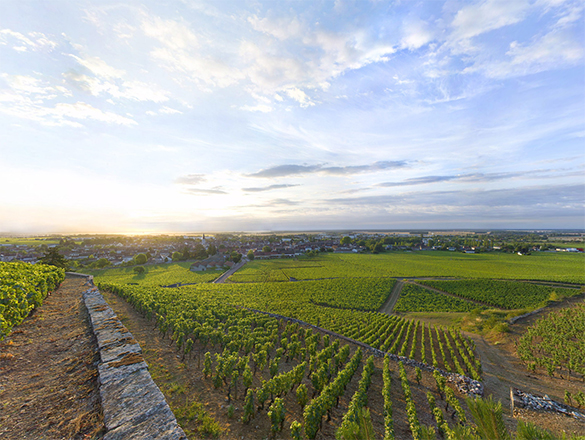

The vineyards of Bourgogne produce some great wines with a historical and international reputation. However, the region is not simply limited to its iconic appellations. In addition to its Village Premier Cru and Grand Cru AOCs, it also produces a range of wonderful Régionale and Village appellations to explore.
You will also find a full list of the Bourgogne’s Climats and lieux-dits on this page.
Check out the complete list of the 84 Bourgogne appellations.
However, your exploration has only just begun. Bourgogne wines have never before offered such high quality. Besides our range of internationally celebrated wines, try some of our lesser-known appellations where there are lots of surprises in store.
And for a fun way to find out more about the wines on offer, try out our “Which Bourgogne wine is right for me?” quiz, or check out Bourgogne Maps to take an interactive tour of the region.
Village appellation
VIGNOBLE DE LA CÔTE DE NUITS
11 septembre 1936,
Almost all reds - Pinot Noir.
Whites - Chardonnay.
Area under production*:
1 hectare (ha) = 10,000 m2 = 24 ouvrées.
Reds: 289.36 ha (including 130.44 ha Premier Cru).
Whites: 15.82 ha (including 12.06 ha Premier Cru).
Average annual yield**:
1 hectolitre (hl) = 100 litres = 133 bottles.
Reds: 10,675 hl (including 4,442 hl Premier Cru).
Whites: 371 hl (including 237 hl Premier Cru).
*In 2022 **5-year average, 2017-2021
Appellation Village of the Côte de Nuits region (Côte-d’Or).
This appellation includes 41 Premiers Crus Climats.
Producing communes: Nuits-Saint-Georges, Premeaux.
On the label, the appellation NUITS-SAINT-GEORGES and NUITS-SAINTGEORGES PREMIER CRU may be followed by the name of the Climat of origin.

The appellation falls into two parts, divided by the town itself. The northern portion extends as far as the border of Vosne-Romanée, and the southern section lies partly in Nuits-Saint-Georges and partly in Premeaux.
Corresponding differences are observed in the wines. Their colour is an intense crepuscular crimson with a hint of mauve. The nose often features rose and liquorice. The young red wine has aromas of cherry, strawberry and blackcurrant, and when matured, leather, truffle, fur, game. Notes of macerated fruits (prune) complete the picture. Muscular and vigorous, chewy and full-bodied, its structure is both well built and well-balanced and it is long in the mouth. It is most fully enjoyed after several years’ laying down which rounds it out and underlines its sensuality and breeding.
The (rare) whites have a strong gold colour. They are firm and usually heady with a bouquet of brioche and sometimes honey, underpinned by white flowers.

Red: powerful and strongly-built, this is the wine that confers on the Côte de Nuits its noble reputation of a sturdy character. Its normal partners would be any meat that is at once full flavoured and virile (roast lamb, rib steak, or breast of fattened duck), as the wine firmly coats and envelops its fibrous texture. Feathered game, similarly, responds to the charm of the wild and animal aromas which the wine develops with age. Sophisticated diners will also serve it with certain fish dishes such as carp in red-wine sauce. Cheeses: soft centred cheeses in the style of Epoisses, Langres or Soumaintrain.
Serving temperature: 15 to 16°C.
White: this seldom met-with wine has the breeding and opulence required to partner with grilled sea-fish and grilled or cheese-topped crustaceans.
Serving temperature: 12 to 13°C.

Nuits-Saint-Georges is a likeable and lively town with a centuries-old history of winemaking. It gives its name to the Côte de Nuits, and its patron saint, Saint Georges, gives his name to their most famous wine. Its AOC, which dates from September 1936, includes the commune of Premeaux-Prissey in the appellation. Most of the wines grown here are Pinot Noir, but there are some plots planted with Chardonnay. The Confrérie des Chevaliers du Tastevin, Bourgogne’s most famous wine-brotherhood, was founded here in 1934.

The soils in the northern sector derive from pebbly alluvium washed down from up-slope, or, in the low-lying parts, silty deposits from the river Meuzin. In the southern sector the alluvia at the base of the slope originate in the combe of Vallerots where there are deep marly-limestone soils, while at the top of the slope, the rock is almost at the surface. Exposures are mostly to the East or South-East.
